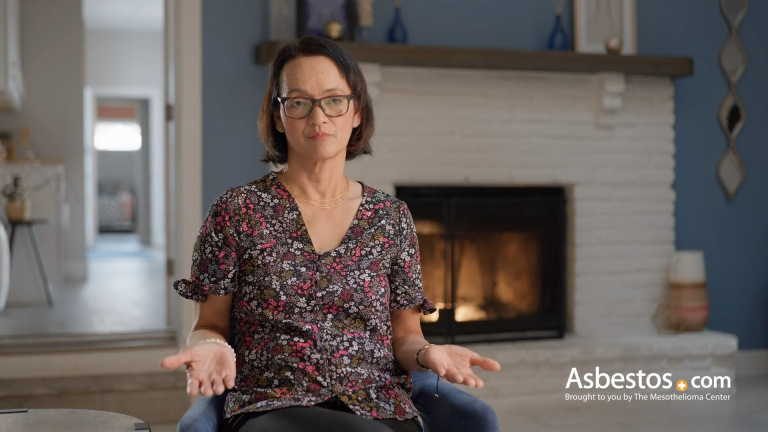How to Prove Asbestos Exposure for a Mesothelioma Claim
To prove asbestos exposure for a mesothelioma legal claim, an attorney will need evidence of your exposure to asbestos products. Mesothelioma attorneys will also gather medical documentation, such as test results and pathology reports, to build your case.
How Can You Prove Asbestos Exposure for a Mesothelioma Lawsuit?
An experienced lawyer can help you prove asbestos exposure caused your mesothelioma. They’ll start with an investigation of where and how you were exposed. Lawyers use their expertise and resources to help clients build their claims. These resources can include large databases of asbestos products and sites known for asbestos exposure
Your mesothelioma law firm will gather key documents documenting your mesothelioma. This includes a doctor’s statement linking your asbestos exposure to your diagnosis, test results and other key medical records. Your work history, employment records, pay stub sand job site records will also be gathered. Witness statements from former co-workers can also help strengthen your lawsuit or claim with an asbestos trust fund.
- Investigators
-
“Typically, an investigator will come and ask you questions about your exposure. Your memory is an important piece of this,” – Joe Lahav, lawyer and on-site legal advisor at The Mesothelioma Center at Asbestos.com, says.
In addition to work experience, investigators will ask questions about other possible sources of exposure, such as a history of talc use. They have the training to delve into critical details about possible asbestos exposure, ensuring nothing is overlooked.
- Product Identification Tool
-
Joe Lahav explains, “Investigators will present you with a product identification tool or big binder of different products containing asbestos. Sometimes people don’t realize products they worked with contained asbestos. They’ll say, ‘I worked with that gasket.’ Or, ‘I worked with that kind of insulation. I didn’t realize it had asbestos in it.’”
This tool helps identify specific asbestos-containing products you may have encountered. Recognizing these products can significantly strengthen your case, linking your exposure to specific items.
- Records of Job Sites
-
“Investigators will ask you ‘Where were you exposed? What job sites did you work at?’ Good lawyers have records of job sites all over the U.S. where asbestos was heavily used,” Joe Lahav shares.
Law firms maintain extensive records of job sites known for asbestos use. Cross-referencing your work history with these records helps your attorney can pinpoint exact locations where you were likely exposed to asbestos.
- Witness Statements
-
“People that worked with you — your co-workers — are another way to prove your asbestos exposure” Joe Lahav notes.
Witness statements from former co-workers can provide crucial testimony about your exposure to asbestos in the workplace. These statements help corroborate your account and provide additional evidence to support your claim.
Proving Secondary Asbestos Exposure
Primary exposure happens when someone encounters asbestos directly. Secondary asbestos exposure happens when someone accidentally brings home fibers. These fibers can be carried on hair, clothes, skin or shoes. Secondary exposure often happens when doing laundry when work clothes are covered in asbestos dust. Secondary exposure also causes mesothelioma.
Lawyers can help families prove secondary exposure even after the person with primary asbestos exposure has passed away. They’ll still gather work records and witness accounts to prove the primary and secondary exposure.
Key Facts About Secondary Exposure
- A study in the Journal of Lung Health and Diseases found 30% of mesothelioma cases are from secondary asbestos exposure.
- Most asbestos exposures at home affect women, according to the American Journal of Industrial Medicine.
- Washing clothes with asbestos fibers raises the risk of mesothelioma and other diseases.
A long-term Finnish study found people exposed to asbestos at home and in the environment had a much higher chance of getting mesothelioma. It also showed children who lived and went to school near an asbestos cement plant faced a higher risk of cancer later in life, especially mesothelioma. The study, published in the Multidisciplinary Digital Publishing Institute, warned about the dangers of exposure from multiple sources.
Peritoneal mesothelioma survivor Susan Dickman tells us about her secondary asbestos exposure as a child. She says, “My dad worked in the boat business. He would come home from work and pick us up in his jumpsuit. Of course it had asbestos on it.”
Why Is Proving Asbestos Exposure Important for Legal Claims?
It’s vital to prove asbestos exposure for mesothelioma legal claims. It is the key evidence to hold an asbestos defendant accountable. Without this evidence, your claim cannot proceed.
Providing the right evidence is crucial for all mesothelioma legal claims. This includes personal injury, wrongful death and asbestos trust fund claims. For a favorable resolution, strong proof of asbestos exposure is essential.
A mesothelioma doctor’s diagnosis can confirm the cancer’s cause. But it’s only the starting point. A skilled mesothelioma attorney will gather proof of your exposure to strengthen your claim.
In the discovery phase, your attorney will collect documents and witness testimonies. This evidence boosts the odds of success in a trial or settlement.
“If you know you’ve got clear asbestos exposure — stronger evidence — and you can prove your case more strongly, the defendants are more likely to give you more money because they’re more likely to lose if they have to go to trial,” said lawyer and on-site legal advisor Joe Lahav.
5.0 rating | 150+ reviews | A+ BBB

What Can You Do to Prove Your Asbestos Case?
While your lawyer will work to gather documentation and prove your case, you can help collect whatever records you may have. Assemble your tax records, documents from your military service and medical records. Talk to your doctor’s office for all the documents your lawyer recommends.
Documentation Needed to Prove Your Asbestos Case
- Blood tests supporting your cancer diagnosis
- Contact information for former co-workers
- Employment records (such as human resources paperwork you may have signed)
- Imaging scans showing the extent of the cancer
- Pathology report confirming your mesothelioma diagnosis
- Pay stubs proving past employment
- Physician’s statement connecting your asbestos exposure to your diagnosis
Attorney Carl Money tells us, “We get your medical records, your work history records, your union records and your military records. We get everything in one fell swoop when we meet you that first time. That way, we don’t have to bother you. You need to be visiting with your family and working on your health.”
If you have difficulty collecting all of these records, your lawyer can help. They’ll also get witness statements from co-workers and opinions from medical experts like radiologists and mesothelioma specialists.
Your Doctor’s Statement
Your doctor’s statement helps prove the connection between your mesothelioma diagnosis to your asbestos exposure. This medical assertion of that link is crucial for the success of your mesothelioma lawsuit.
This statement from your doctor should clearly state your mesothelioma diagnosis has been confirmed. It should also include your pathology report and any other tests used for your diagnosis. These can include CT scans, X-rays or a biopsy report. These documents help support your claim.
What Are the Challenges in Proving Asbestos Exposure?
A major challenge in proving asbestos exposure is scans like chest X-rays can spot signs of illness but not asbestos fibers. Fluids can be collected and tested for fibers. For example, doctors can test when excess fluid around the lungs (pleural effusion) or in the belly (ascites) is drained. However, asbestos fibers aren’t always easily seen in these fluids.
Doctors can also check for asbestos in mucus, urine or feces. Iron staining of tissue samples taken during a biopsy can also help visualize asbestos fibers in tissue.
Difficulties Proving Asbestos Exposure
- Long latency period: The latency period for mesothelioma is 20 to 60 years and similarly long for other asbestos-related diseases.
- Measuring asbestos fibers: It’s hard to quantify the fibers in the air, especially in temporary workspaces.
- Multiple potential sources: Asbestos fibers can come from many sources. Some people may be exposed to asbestos multiple times in their life.
Pleural mesothelioma survivor Kim Madril was exposed to asbestos in her middle and high school classrooms. To prove her asbestos exposure for her claim, she tells us a former teacher and classmate confirmed the conditions and asbestos products she encountered. In the auto shop, Kim worked with asbestos brakes and clutches. In art class, she handled clay and ceramics, which are known to contain asbestos. Her classrooms likely also contained asbestos since many older schools used it in construction.
Carl Money tells us, “The challenges of proving your asbestos exposure will be overcome by the attorneys because mesothelioma is caused by one thing, and that’s asbestos exposure. You have mesothelioma because you breathed asbestos in your lungs. So we have to figure out how you breathed that asbestos in your lungs.”
Commonly Asked Questions About Proving Asbestos Exposure for a Mesothelioma Claim
- What are the steps to filing a mesothelioma lawsuit?
-
It is best to hire an attorney specializing in asbestos litigation and allow them to pursue litigation against the asbestos companies and file claims against the asbestos trusts.
Answered By: Carl Money, Mesothelioma Attorney, Nemeroff Law Firm
- What will navigating the legal process be like?
-
You should not have to navigate the legal process alone. It is best to hire an attorney specializing in asbestos litigation and allow them to pursue litigation against the asbestos companies and file claims against the asbestos trusts.
Answered By: Carl Money, Mesothelioma Attorney, Nemeroff Law Firm
- Can I file a mesothelioma lawsuit if I don’t know where I was exposed to asbestos?
-
Certainly. Many people are unsure of where they were exposed to asbestos. Your mesothelioma attorney will investigate all possible exposure with you.
Answered By: Carl Money, Mesothelioma Attorney, Nemeroff Law Firm
- Can I still prove asbestos exposure if my employer is no longer in business?
-
Yes. Asbestos exposure can often be proven even though your employer is no longer in business.
Answered By: Carl Money, Mesothelioma Attorney, Nemeroff Law Firm




